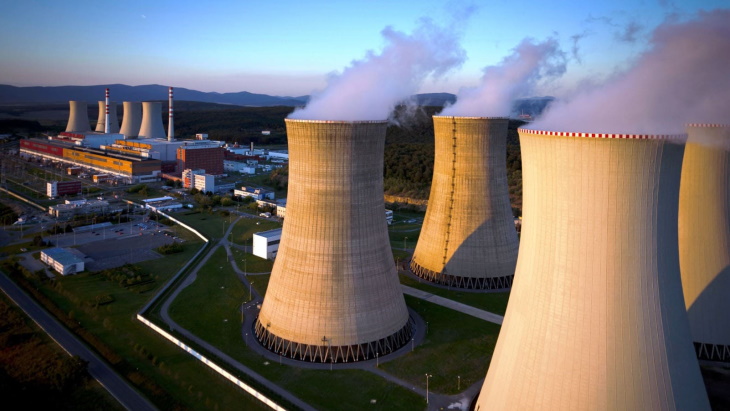
The start-up process involves gradual increases in power, with tests carried out before the level is raised. Once the tests at 75% are successfully completed there will be further checks at 90% and then 100%. The unit's power was increased to 55% in March, when the hope was the final 144-hour trial run at 100% would take place in June.
The company says that by mid-July the unit had supplied about 500,000 MWh of electricity to the grid, which it said was equal to the annual consumption of 200,000 households.
Construction of the first two 471 MWe VVER units at the four-unit Mochovce plant started in 1982. Work began on units 3 and 4 in 1986, but stalled in 1992. The first two reactors were completed and came into operation in 1998 and 1999, respectively, with a project to complete units 3 and 4 beginning ten years later. Unit 4's schedule has been to follow about one or two years behind unit 3. Each of the units will be able to provide 13% of Slovakia's electricity needs when operating at full capacity.
The final design includes many upgrades to safety and security, including increased aircraft impact protection and emergency management measures based on lessons from the Fukushima accident which were incorporated during the project. The Slovak Nuclear Regulatory Authority issued the final authorisation for commissioning of unit 3 of the Mochovce plant in August 2022. The service life of the new block is initially planned to be 60 years.
Martin Mráz, Director of AE Mochovce, welcomed the shift to 75% as part of the start-up process, which he said was "extremely challenging, but also technically interesting. The individual stages of the physical and now the energetic start-up have enriched us with new experiences. They will help us not only in launching the third block, but later also the fourth one".
Juraj Krasňanský, director of completion and commissioning of Mochovce 3 and 4, said the unit "met all safety requirements and criteria during the tests, and I am convinced that we will also successfully pass the last three stages of the energy start-up, until the end of the 144-hour proof run".
Slovenské elektrárne, which is equally owned by the state, Italy's Enel and the Czech EPH group started by billionaire Daniel Kretinsky, earlier this year signed an extension to its supply-and-pricing agreement with the country's ministry of economy and ministry of finance, agreed last year as part of extraordinary measures aimed at curbing the impact of high energy prices.
The original agreement was for the company to supply 6.15 TWh of electricity per year for 2023 and 2024 at a well-below-market price of EUR61.20 (USD66.60) per MWh. This has now been extended to supply 5.5 TWh of electricity to households per year for 2025 at a price of EUR66.70/MWh, rising to EUR72.70 in 2026 and EUR79.30 in 2027.
Slovakia expects to become a net exporter of energy once the two new units at Mochovce are both up and running.